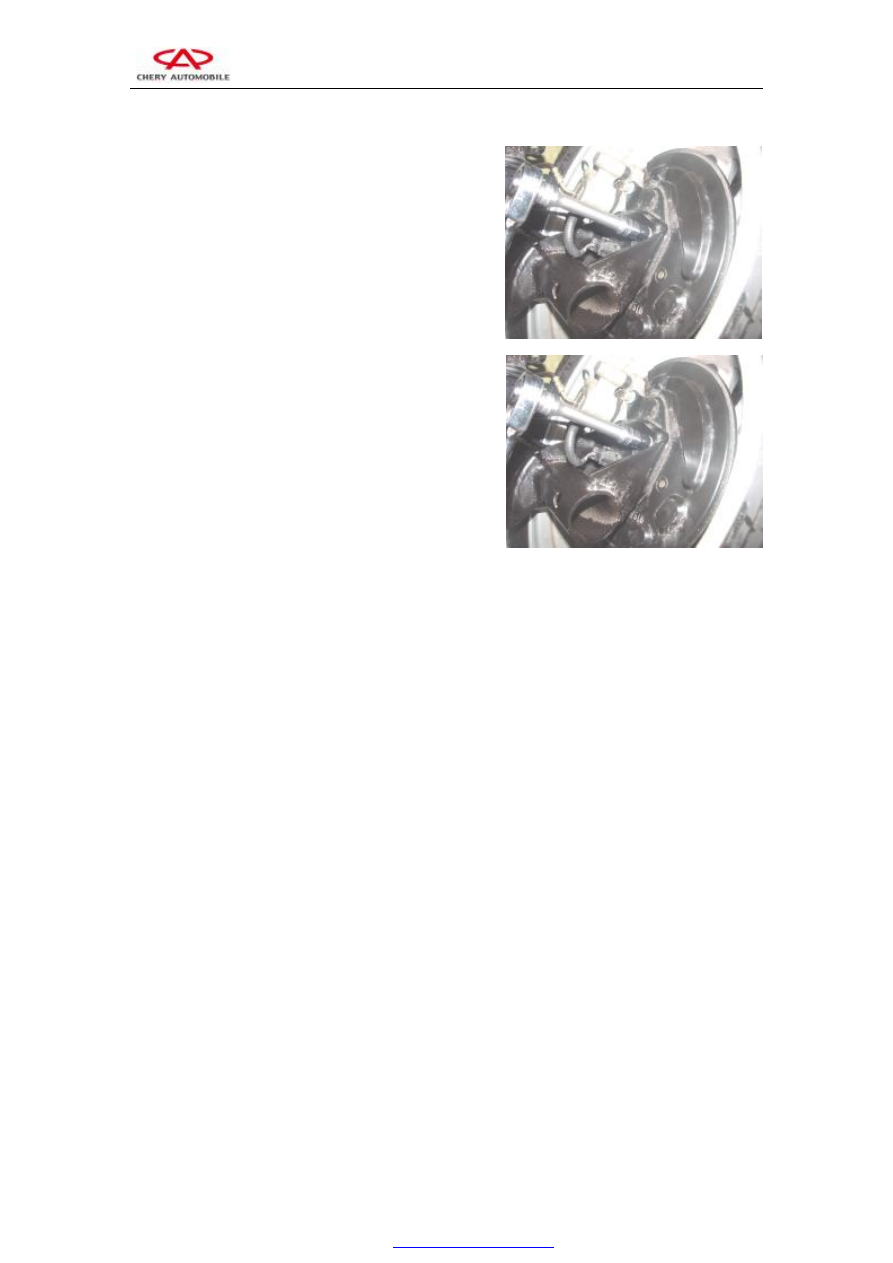Chery B14. Manual - part 9

S
ervice Manual for Chery V525 Car Chassis
4.2 Removal of rear axle assembly
4.2.1Remove the four connecting bolts of rear axle
and brake assembly via 13# sleeve.
Torque: 70±5N.m
4.2.2 Remove the hinged bolts connecting rear axle and
vehicle body via 17# sleeve. Then remove the rear axle.
Torque: 110±10N.m
5. Assembly procedures
The assembly procedure is reverse to that of disassembly.
Ⅲ. Adjustment of four-wheel alignment
Please use four-wheel alignment gauge as recommended by
Chery Company to carry out parameters detection and
adjustment.
1. Adjustment of front wheel toe-in
Optic test instrument or mechanical toe-in regulator can be
used for toe-in adjustment.
1.1 In accordance with requirements for test instrument, make
adjustment preparations for wheel alignment.
1.2 Loosen the lock nut fastening rightward connecting tie rod
and elastic ring, turn the toe-in regulation rod to adjust length
as required to get prescribed value.
Toe-in value: 10′±6′
1.3 Fasten the lock nut, remount circlip of the jacket, and
check whether the lock nut is tightened, and ensure the jacket
is in right position;